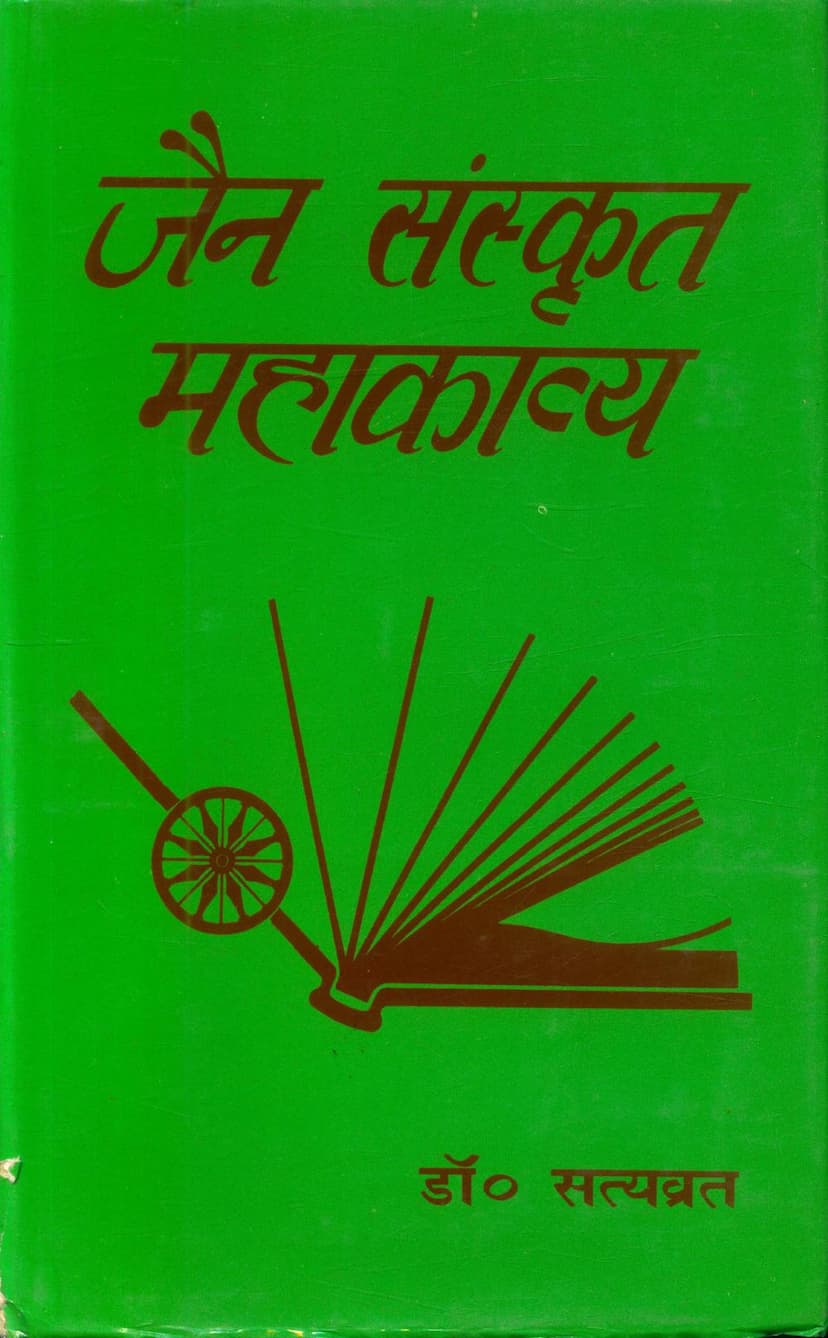Jain Sanskrit Mahakavya
Added to library: September 2, 2025

Summary
Here is a comprehensive summary of the Jain Sanskrit Mahakavya by Satyavrat, based on the provided text:
Book Title: Jain Sanskrit Mahakavya (Jain Sanskrit Mahakavya) Author: Dr. Satyavrat Publisher: Jain Vishva Bharati Publication Year: 1986
Overall Scope: This book, "Jain Sanskrit Mahakavya," authored by Dr. Satyavrat, is a detailed and comparative critical analysis of Sanskrit Mahakavyas composed during the 15th, 16th, and 17th centuries CE. It meticulously examines twenty-two poetic works categorized into four distinct classifications: Shastriya Mahakavya (Classical Mahakavya), Shastra Kavya (Religious/Philosophical Kavya), Aitihasik Mahakavya (Historical Mahakavya), and Pauranik Mahakavya (Mythological Mahakavya). The work is recognized as a unique and invaluable contribution to its field.
Key Themes and Findings:
-
Continuation of Mahakavya Tradition: Jain Sanskrit Mahakavyas are presented as a continuation of the ancient Mahakavya tradition, originating from poets like Ashvaghosha and extending to Shriharsha. Jain poets skillfully utilized this established literary capital.
-
Influence of Jain Purana: Jain Purana literature, particularly works like the Mahapurana and Trishtishalakapurushacharitra, served as primary sources and inspiration for many Jain Mahakavyas. These Puranas themselves often exhibit significant poetic value and resemble Mahakavyas in their narrative structure.
-
Didactic Purpose and Religious Influence: A significant characteristic of Jain Mahakavyas is their underlying religious and philosophical purpose. While adhering to poetic conventions, they often function as vehicles for disseminating Jain principles such as Panchavrata (five vows), Syadvada (theory of manifold aspects), Jiva-Ajiva (soul and non-soul), and Karma. This blend of aesthetic appeal and utility is considered acceptable as long as it doesn't distort the soul of poetry.
-
Classification of Mahakavyas: The book categorizes the studied Mahakavyas into four types based on their style and subject matter:
- Shastriya Mahakavya (Classical Mahakavya): These follow the traditional Mahakavya conventions closely. The book discusses eight such works.
- Shastra Kavya (Religious/Philosophical Kavya): These focus on religious teachings and philosophical concepts. Two works are discussed under this category.
- Aitihasik Mahakavya (Historical Mahakavya): These draw their narratives from historical figures or events. They are further divided into two types: those based on rulers/ministers and those focusing on renowned Jain acharyas and influential figures. Six historical Mahakavyas are analyzed.
- Pauranik Mahakavya (Mythological Mahakavya): These are based on traditional Puranic narratives, often featuring divine intervention and supernatural events. The remaining works fall under this category.
-
Characteristics of Jain Mahakavyas:
- Mangalacharana (Benedictory Verses): Jain Mahakavyas often feature elaborate and diverse mangalacharana, which can beनमस्कारात्मक (salutatory) or आशीर्वादात्मक (benedictory). Some works include multiple benedictions across stanzas or even in each canto.
- Narrative Content: While adhering to the vast Purana tradition, Jain poets often refined or trimmed episodes unsuitable for a Mahakavya. The incorporation of elements promoting Jain philosophy is a recurring theme.
- Poetic Style: The book notes a tendency among some Jain poets to prioritize artistic embellishment and stylistic flourish, sometimes at the expense of a concise narrative, a trait observed in post-Kalidasa Sanskrit Mahakavyas.
- Heroic and Romantic Elements: While the dominant rasa in many Jain Mahakavyas is Shanta (peaceful), the works also depict Shringara (erotic) and Veera (heroic) rasas, sometimes with significant detail, even drawing comparisons to poets like Magha and Shishupala Vadha.
- Language and Style: The language varies from mature and refined to ornate and complex, with a tendency towards extensive use of compounds and elaborate descriptions. Some works are noted for their challenging use of Chitrakavya (pictorial poetry) and complex wordplay.
- Use of Vernacular Influences: Some works show the influence of Prakrit and Apabhramsha.
-
Specific Works Analyzed: The book provides detailed analyses of the following 22 Mahakavyas:
- Classical Mahakavyas (Shastriya): Jainakumbarva (Jayashakrasuri), Kavyamandan (Mandana), Neminathamahakavya (Kirtiraja Upadhyaya), Yadusundaramahakavya (Padmasundara), Hirasaugabhya (Devavimalagani), Bharatabahubalimahakavya (Punyakaushal), Sthulabhadra-gunamalacharitra (Surchandra), Digvijayamahakavya (Meghavijayagani).
- Religious/Philosophical Kavyas (Shastra-Kavya): Devanandamahakavya (Meghavijayagani), Saptasandhanamahakavya (Meghavijayagani).
- Historical Mahakavyas (Aitihasik): Hammiramahakavya (Nayachandrasuri), Kumarpalacharita (Charitrasundargani), Vastupalacharita (Jinhharshagani), Somsaugabhya (Pratishthasoma), Sumatisambhavam (Sarvavijaya), Vijayprashasti Mahakavya (Hemavijaya).
- Mythological Mahakavyas (Pauranik): Shridharacharitra (Manikyachandrasuri), Yashodharacharitra (Padmanabhakayastha), Parshvanathakavya (Padmasundara), Parshvanathacharitra (Hemavijaya), Jambuswamicharitra (Rajamall), Pradyumnacharitra (Ratnchandra).
-
Scholarly Approach: The book is characterized by its scholarly rigor, indicated by the detailed methodology used in analyzing each text. This includes examining the author's background, determining the composition period, analyzing the plot, assessing the use of rasa (aesthetic sentiment), character portrayal, nature depiction, and language-style. The author also delves into the source materials of these Mahakavyas for the first time in this work, revealing the significant influence of Mahapuranas and Trishtishalakapurushacharitra.
Overall Significance: "Jain Sanskrit Mahakavya" serves as a critical survey and appreciation of a substantial body of Sanskrit literature produced within the Jain tradition during a specific historical period. Dr. Satyavrat's work illuminates the creativity, philosophical depth, and literary skill of Jain poets who contributed significantly to the broader Sanskrit literary landscape, often preserving and enriching the Mahakavya tradition during periods when it might have otherwise declined. The book highlights the rich, though sometimes overlooked, literary heritage of Jainism in Sanskrit.